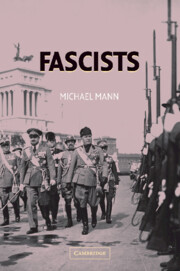Book contents
- Frontmatter
- Contents
- Preface
- 1 A Sociology of Fascist Movements
- 2 Explaining the Rise of Interwar Authoritarianism and Fascism
- 3 Italy: Pristine Fascists
- 4 Nazis
- 5 German Sympathizers
- 6 Austro-Fascists, Austrian Nazis
- 7 The Hungarian Family of Authoritarians
- 8 The Romanian Family of Authoritarians
- 9 The Spanish Family of Authoritarians
- 10 Conclusion: Fascists, Dead and Alive
- Appendix
- Notes
- Bibliography
- Index
- References
Bibliography
Published online by Cambridge University Press: 05 June 2012
- Frontmatter
- Contents
- Preface
- 1 A Sociology of Fascist Movements
- 2 Explaining the Rise of Interwar Authoritarianism and Fascism
- 3 Italy: Pristine Fascists
- 4 Nazis
- 5 German Sympathizers
- 6 Austro-Fascists, Austrian Nazis
- 7 The Hungarian Family of Authoritarians
- 8 The Romanian Family of Authoritarians
- 9 The Spanish Family of Authoritarians
- 10 Conclusion: Fascists, Dead and Alive
- Appendix
- Notes
- Bibliography
- Index
- References
- Type
- Chapter
- Information
- Fascists , pp. 395 - 416Publisher: Cambridge University PressPrint publication year: 2004



